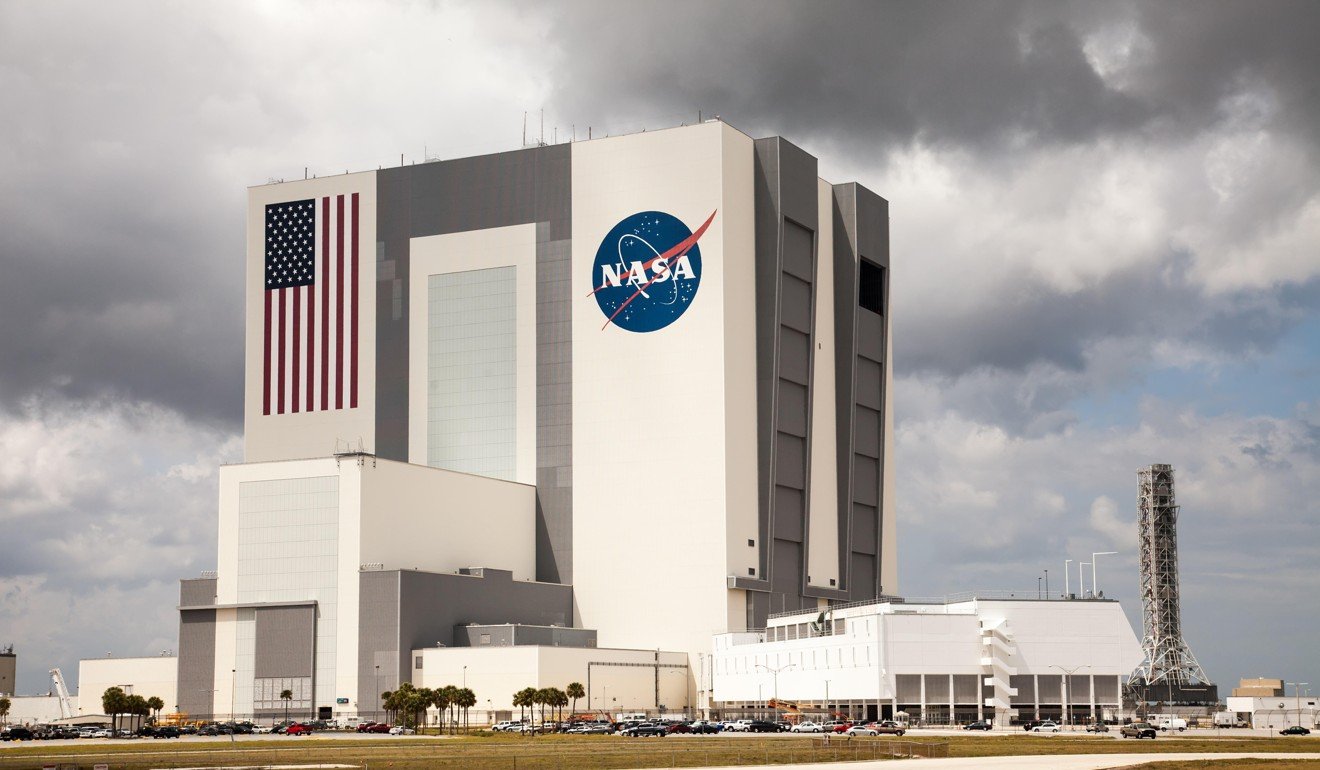
Nasa says it will work with Chinese space agency on lunar landing research
- Discussions have been held with China National Space Administration and cooperation will be ‘transparent, reciprocal and mutually beneficial’
- Nasa scientists have been exchanging data with Chinese team since Chang’e 4 soft landing, and its lunar orbiter will take pictures of the site
Nasa has confirmed that it will work with its Chinese counterpart on lunar landing research, saying the cooperation would be “transparent, reciprocal and mutually beneficial”.
In a statement on Friday, Nasa said it had held discussions with the China National Space Administration “to explore the possibility of observing a signature of the landing plume” of the Chinese lunar lander Chang’e 4, using its own spacecraft’s instruments.
The Chang’e 4 made a historic soft landing on the far side of the moon on January 3.
Nasa said its scientists had been exchanging, collecting and analysing data with the Chinese team since the soft landing, and its lunar orbiter was expected to pass over and take pictures of the landing site on January 31.
China’s first lunar leaf dies after Chang’e scientists forced to cut power to stop battery running low
The cooperation comes against the backdrop of heightened tensions between Washington and Beijing, with Chinese technology products under intense scrutiny in the United States amid national security concerns. That scrutiny of Chinese products – from Huawei’s telecoms equipment to Hikvision surveillance cameras – and pressure on Beijing to scrap its state-driven “Made in China 2025” industrial strategy has put a spotlight on their growing technology rivalry.
The dispute was further complicated last month with the arrest in Canada of Huawei executive Sabrina Meng Wanzhou at the request of the US over alleged Iran sanctions violations.
Although Nasa was banned from bilateral cooperation with China in 2011, it can do so with congressional approval, and the statement suggested the collaboration on lunar landing research had already been cleared by the administration of President Donald Trump and Congress.
The US space agency emphasised that the cooperation would be “transparent”. “All Nasa data associated with this activity are publicly available,” the statement said.
The two sides also agreed that any significant findings resulting from the activity would be shared with the global research community at the UN Committee on the Peaceful Uses of Outer Space meeting in Vienna next month.
Critical roles played by Hong Kong researchers on China’s Chang’e 4 mission to far side of the moon
The research is important for Nasa’s robotic lunar surface missions, which will begin as early as next year. The US campaign to return to the moon – the first in 40 years – has been brought forward by Trump, who has also directed collaboration with international and commercial partners.

China, which has long been excluded from the international space station and many other outer space joint research projects, saw it as a “great opportunity”.
“This time, we have such a great opportunity … we are willing to work with them,” Wu Weiren, chief scientist of the lunar programme, told state broadcaster CCTV on Tuesday.
He said the Nasa scientists made the cooperation request at an international meeting a few years ago, also asking China to extend the lifespan of its Queqiao relay satellite and to allow a US beacon device to be placed on the Chang’e 4, saying it would help the US plan its own lunar landing strategy.
According to Chinese state media, the United States is among half a dozen countries that have collaborated with China on the lunar project. Other partners include Germany, Sweden, the Netherlands and Saudi Arabia.

